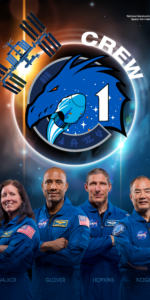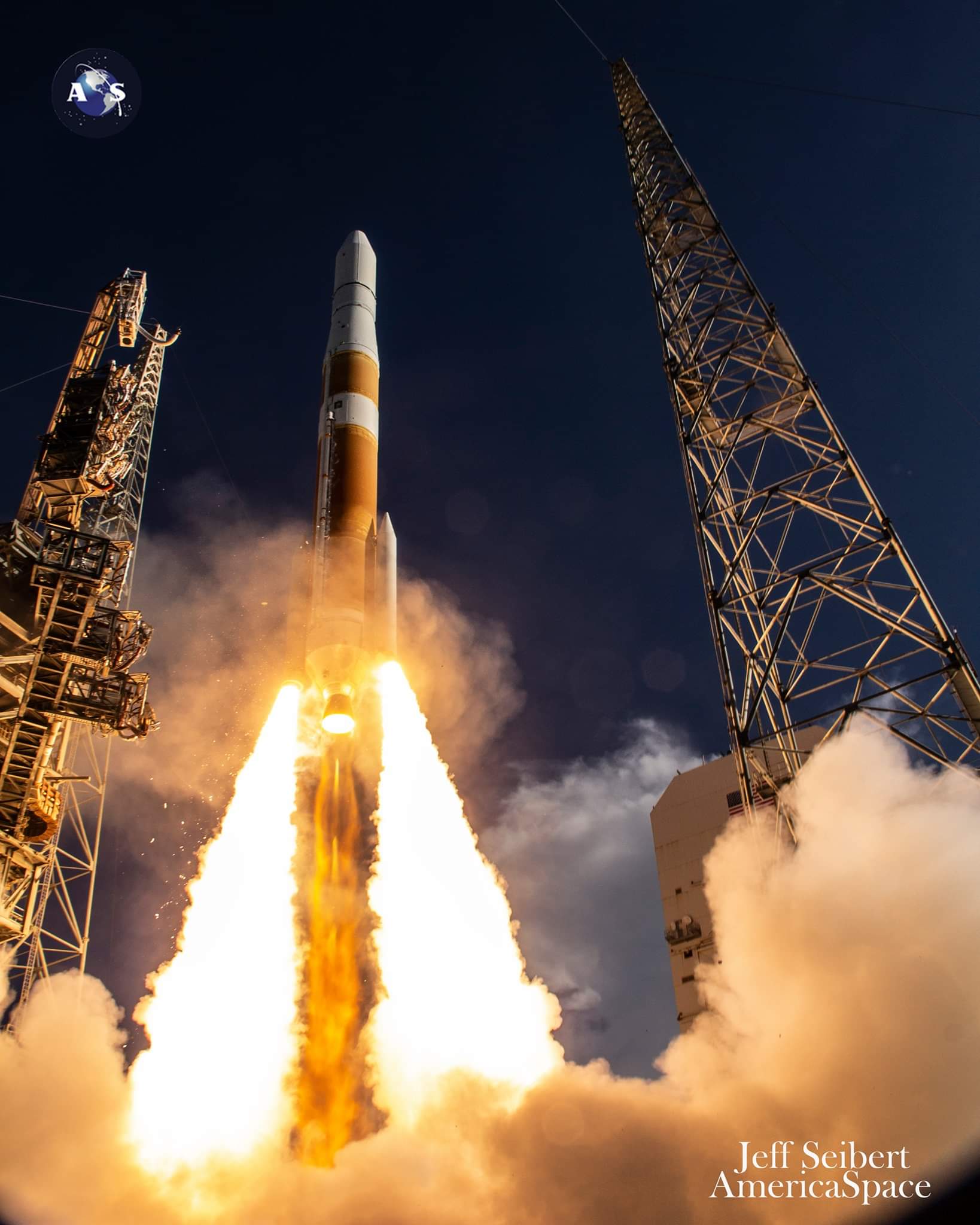
One year ago today, the workhorse Delta IV booster flew its last-ever mission in a “single-stick” configuration, when it smoothly delivered the second Block III Global Positioning System (GPS) navigation and timing satellite into Medium Earth Orbit (MEO). That bittersweet liftoff from Space Launch Complex (SLC)-37B at Cape Canaveral Air Force Station, Fla., at 9:06 a.m. EDT on 22 August 2019, truly marked the beginning of the end of an era, as United Launch Alliance (ULA) continues to gradually phase out not only its Delta IV fleet of rockets, but also—eventually—its frequently-flying Atlas V, in favor of the new Vulcan-Centaur heavylifter, which is set to make its maiden voyage sometime next year.
But even as 12 months pass today since the last Delta IV Medium launch, we can look ahead to the final five scheduled missions by its big brother, the triple-barreled Delta IV Heavy, which is set to roar into action again on Wednesday, 26 August, to loft the classified NROL-44 payload into orbit on behalf of the National Reconnaissance Office.
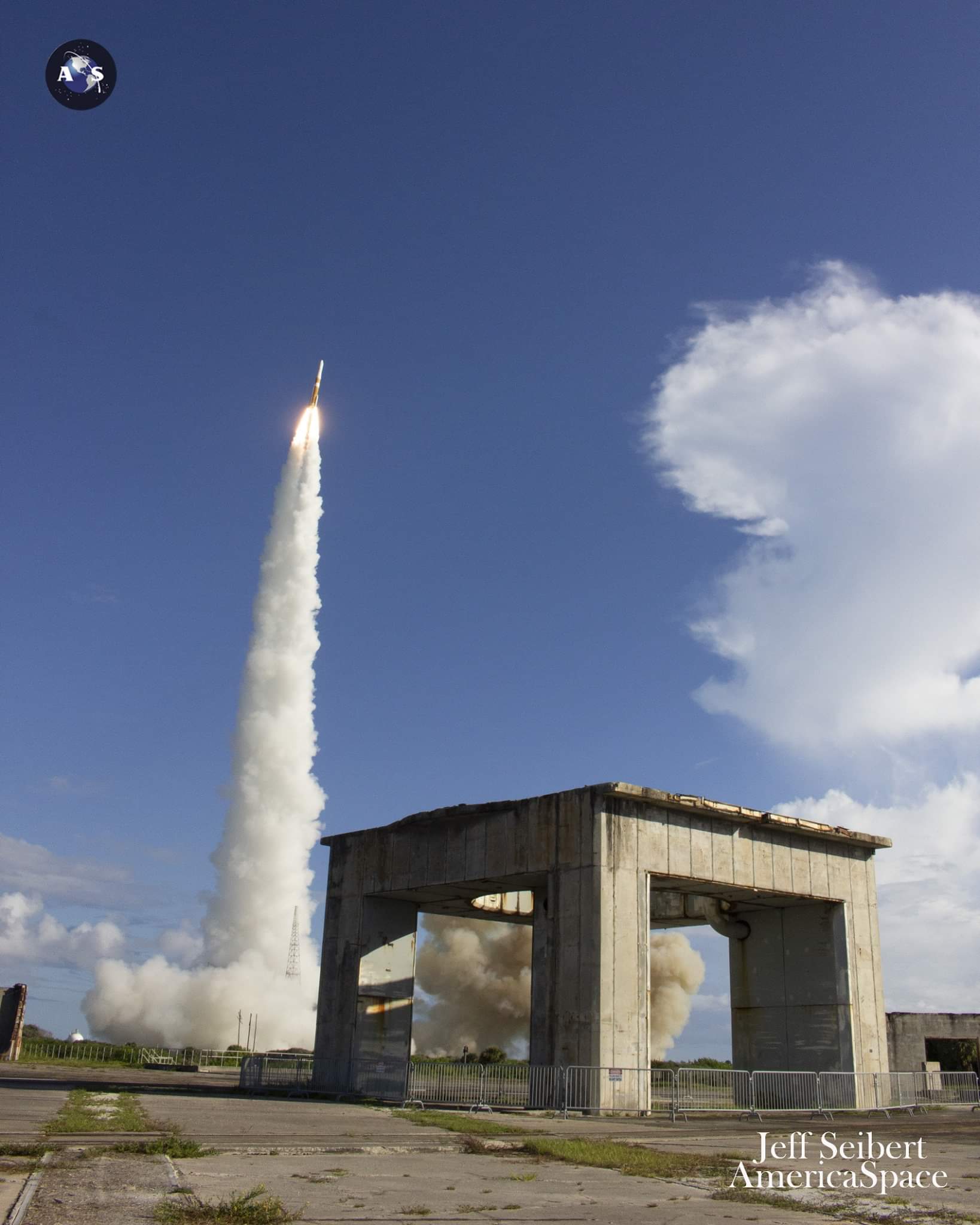
“ULA made the decision to retire the Delta IV Medium launch vehicle when our National Security Space customer decided to compete missions in 2015,” said Tony Taliancich, ULA director and general manager of launch operations, in comments provided last year to AmericaSpace. “Prior to the acquisition strategy change, ULA was required by the government to maintain two families of launch vehicles to meet assured access to space policy requirements. In a competitive environment, ULA must favor its lowest-cost product to meet the market requirements. Maintaining multiple product lines would lead to lower launch rates and higher costs.”
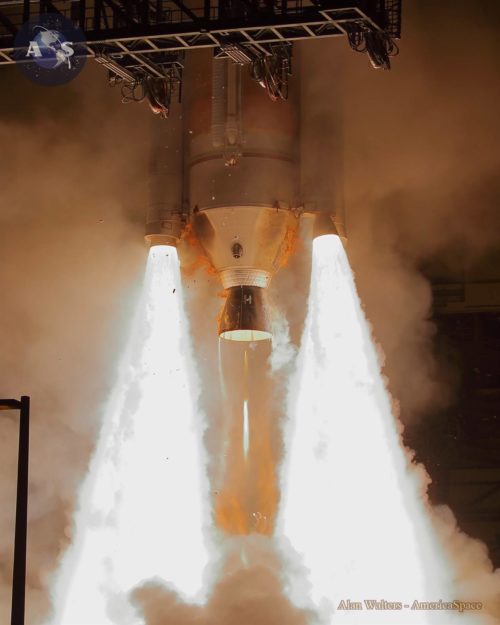
The Delta IV was developed by Boeing’s Defense, Space and Security division for the Evolved Expendable Launch Vehicle (EELV) program. During its lifetime, the rocket was flown in five discrete configurations of increasingly more substantial capability. The Delta IV Medium, with a single Common Booster Core (CBC) and 13-foot-diameter (4-meter) payload fairing, could insert up to 19,400 pounds (8,800 kg) into low-Earth orbit and 9,900 pounds (4,500 kg) into geostationary transfer orbit. The Medium+ (4,2) carried the same sized payload fairing, but was also equipped with two strap-on Graphite Epoxy Motor (GEM)-60 solid-fueled boosters to lift up to 26,200 pounds (11,900 kg) to low-Earth orbit and 14,800 pounds (6,720 kg) to geostationary transfer orbit.
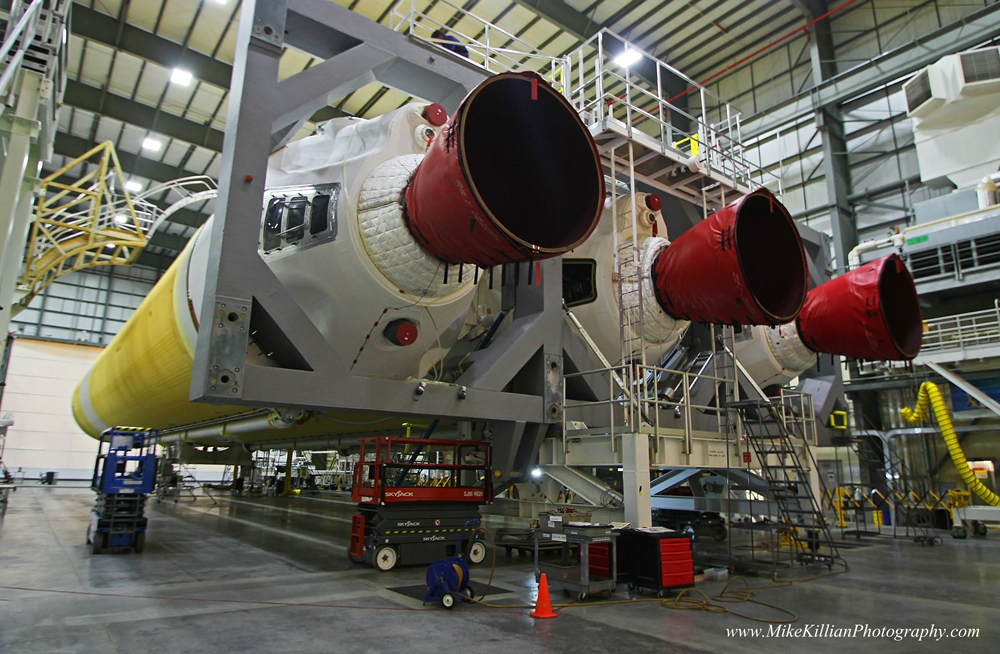
The final three variants were significantly enlarged with 17-foot-diameter (5-meter) payload fairings and were known as the Medium+ (5,2), the Medium+ (5,4) and the behemoth which will take center-stage on Wednesday: the gargantuan Delta IV Heavy. The first pair, as their nomenclature implies, carried two and four strap-on GEM-60s, respectively, and could deliver between 23,300 pounds (10,580 kg) and 29,650 pounds (13,450 kg) to low-Earth orbit and between 12,000 pounds (5,430 kg) and 16,380 pounds (7,430 kg) to geostationary transfer orbit.
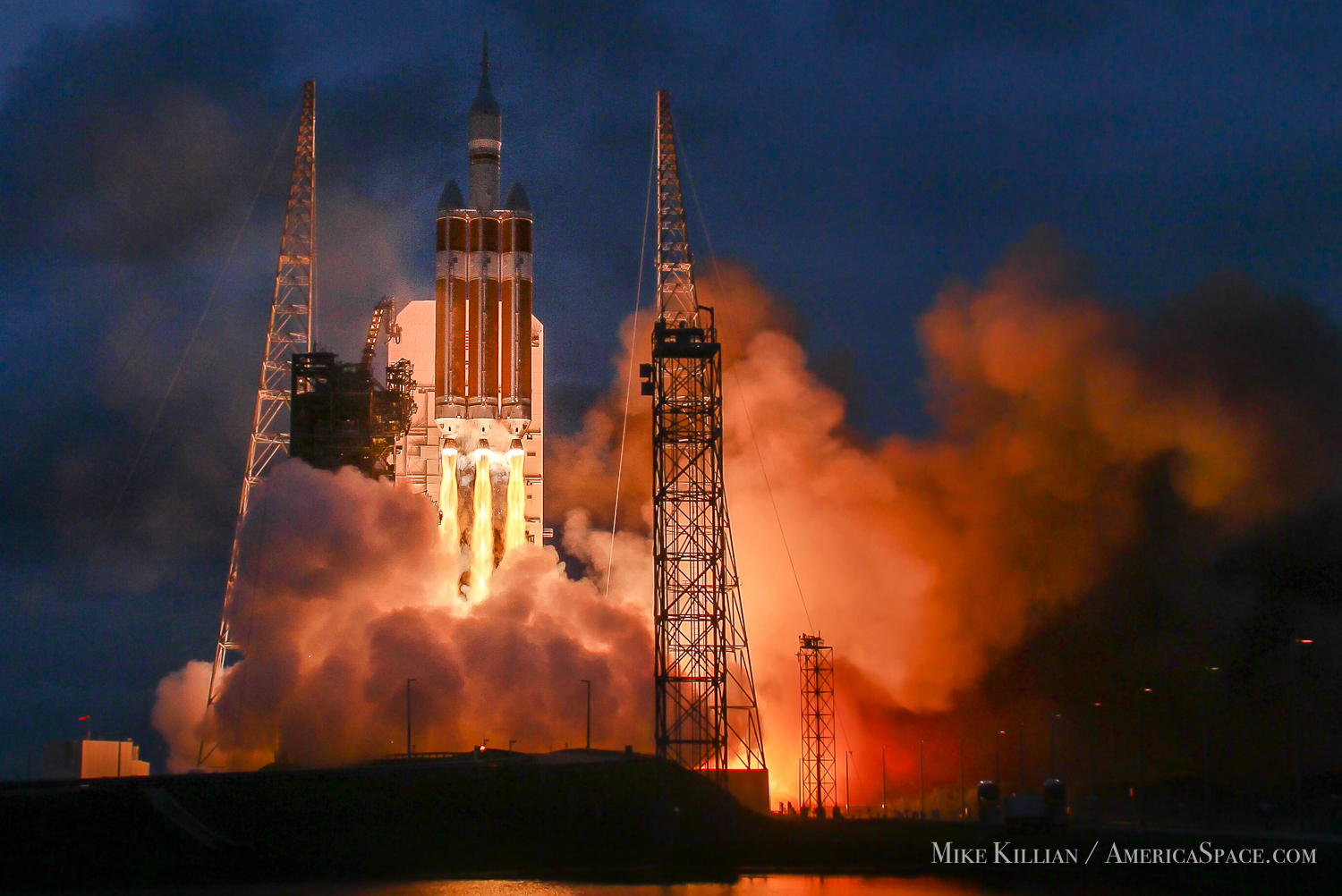
But if the fleet so far had been incrementally scaled upwards, its Delta IV Heavy incarnation truly pushed the envelope on steroids. Its central CBC was joined not by GEM-60s, but by an additional pair of CBCs, affording it a “triple-barreled” look and a correspondingly immense lifting potential. In fact, the Delta IV Heavy could truck up to 50,660 pounds (22,980 kg) into low-Earth orbit and up to 29,540 pounds (13,400 kg) into geostationary transfer orbit.
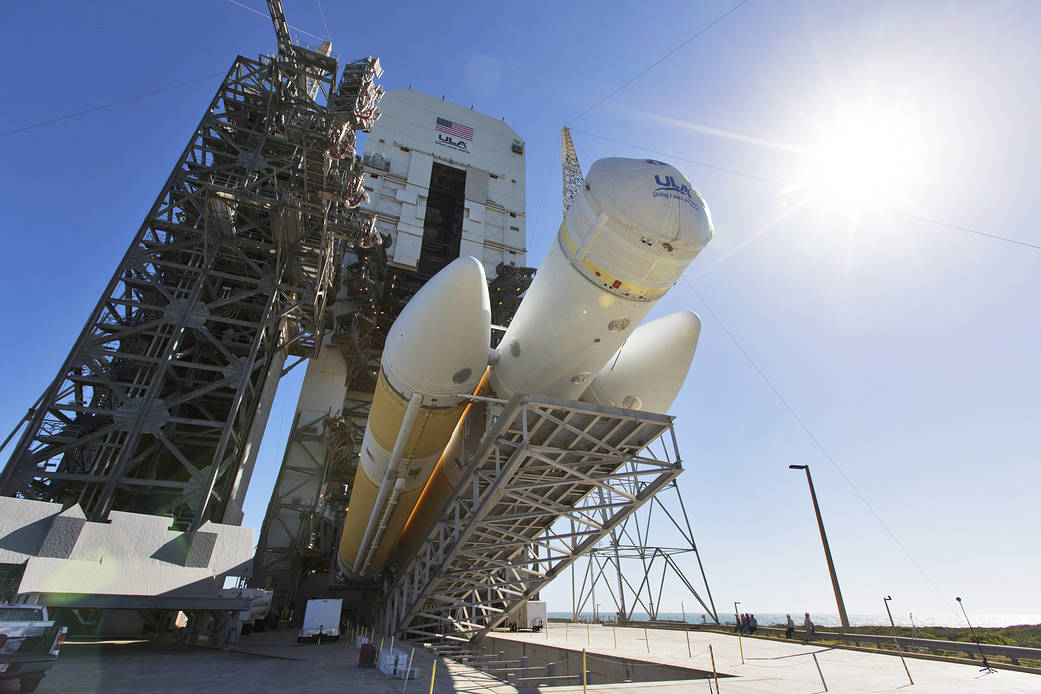
Figures such as these, admittedly, tend to blur after a while, but to put the Heavy into context, it was the largest and most powerful rocket in active operational service, anywhere in the world, until the maiden flight of SpaceX’s Falcon Heavy in February 2018. Not for nothing, therefore, was the Heavy employed to lift some of the largest and most significant missions: from heavyweight reconnaissance/intelligence satellites to the maiden voyage of NASA’s Orion spacecraft on Exploration Flight Test (EFT)-1 and, two years ago, the Parker Solar Probe.
This five-strong fleet of Delta IV vehicles flew 40 times between 20 November 2002 and 22 August 2019. During that span of close to two decades, they delivered ten military communications satellites—including eight members of the Wideband Global Satcom (WGS) network—together with four weather satellites, seven GPS Block IIF and Block III navigation and timing satellites, 12 reconnaissance satellites for the National Reconnaissance Office, one Defense Support Program (DSP) early-warning satellite, a pair of Air Force Space Command (AFSPC) mixed payloads and a single commercial communications satellite. The latter, Eutelsat W5, was actually the Delta IV’s very first payload when it rocketed away from SLC-37B on the evening of 20 November 2002.
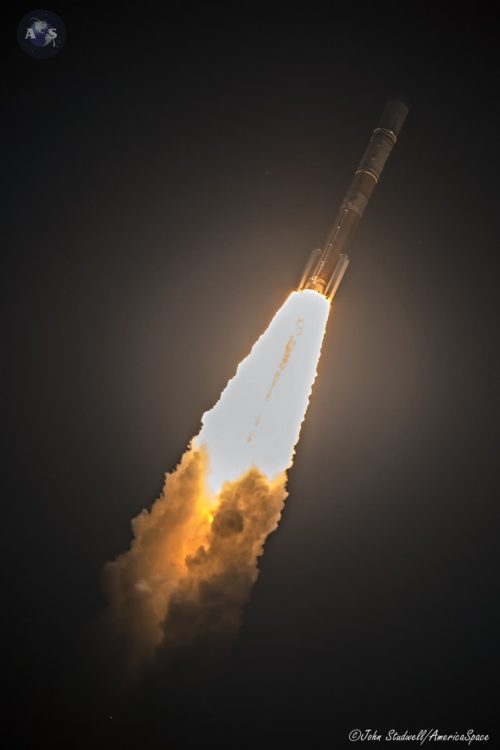
By pure happenstance, both the first (Eutelsat W5) and the last (GPS III-03) missions of the Delta IV were made by the Medium+ (4,2), which launched 15 times in total, making it by far the most-flown of the five variants. In second place is the Delta IV Heavy, which has so far completed 11 launches and is gearing up to add another five missions to its tally (and making it the record-holder) by the time ULA finally retires this last remaining member of the fleet in four years’ time. First flown in December 2004, the Heavy carried a demo payload on its maiden voyage, before going on to deliver the DSP-23 early-warning satellite, NASA’s EFT-1 Orion and Parker spacecraft and a total of seven NROL classified missions, most recently in January of last year. With the exception of a premature CBC shutdown on its first flight, the Heavy has performed with perfection.
So too have its four siblings. The Medium+ (5,4) flew a total of eight times between December 2009 and the final WGS mission in March 2019, with an impeccable 100-percent success record. The Medium+ (5,2) logged three flawless launches between April 2012 and the delivery of the NROL-47 payload to orbit in January 2018. And the barebones Medium also recorded onto three flights between March 2003 and November 2006, hauling a pair of Defense Satellite Communications System (DSCS)-III military communications satellites and a single Defense Meteorological Satellite Program (DMSP) military weather satellite aloft. All told, with the exception of the premature CBC shutdown on the Delta IV Heavy’s maiden test flight, this fleet of remarkable boosters has performed admirably well.
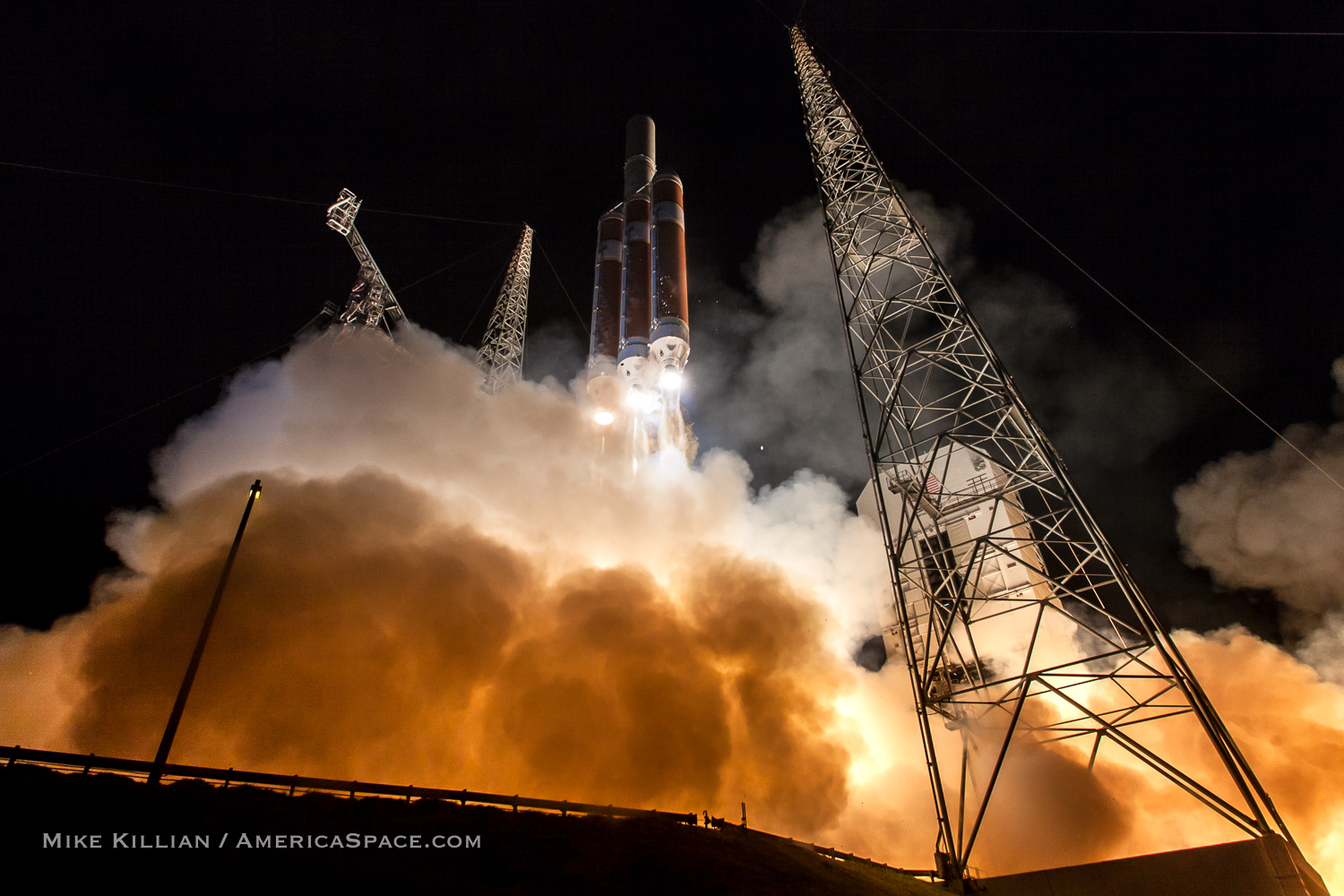
With the Medium fleet gone, only five more missions lie ahead for the Delta IV Heavy, kicking off with Wednesday’s planned launch of NROL-44, thought to be an Advanced Orion signals-intelligence satellite, bound for geostationary transfer orbit. Liftoff is targeted to occur from SLC-37B at 2:16 a.m. EDT, which promises a spectacular middle-of-the-night perspective for skywatchers along the Space Coast.
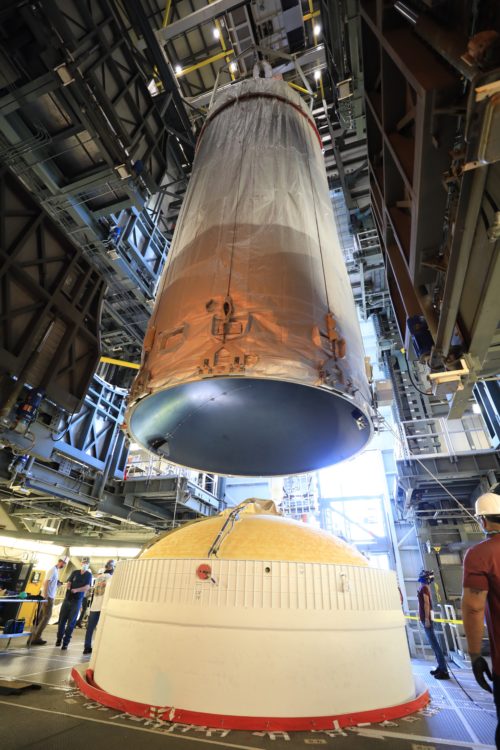
As recently outlined by AmericaSpace, the Heavy was hauled out to the pad last 15 November and underwent a critical Wet Dress Rehearsal (WDR) in January. Originally scheduled to launch in June, it was postponed to late August for reasons which remain unclear. Equally unusual is the sheer length of time the stack has been on the pad; even a launch in June would have produced a record-setting seven-month processing flow. If it launches on time in the small hours of Wednesday, the rocket will have sat on its seaside pad for no less than 285 days. Responding recently to Twitter questions about the need for this lengthy pad flow, ULA CEO Tory Bruno noted cryptically “Reasons” and added that “Special things happening with this one”.
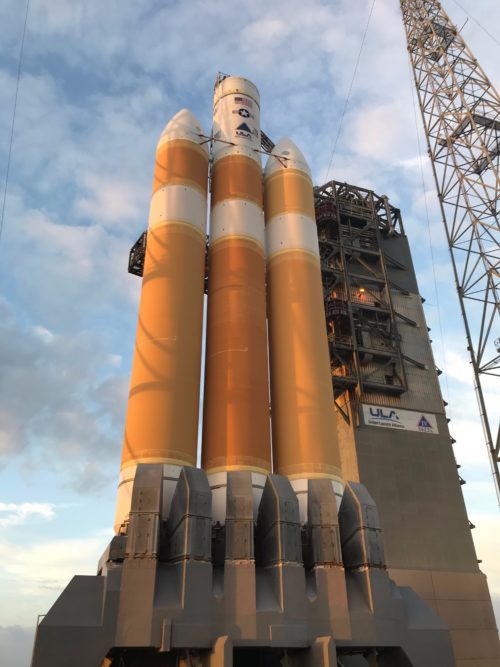
Following NROL-44, four more Delta IV Heavy missions are scheduled over the next four years, two of which will originate from SLC-37B at the Cape and another pair from Space Launch Complex (SLC)-6 at Vandenberg Air Force Base, Calif. NROL-82 will fly from the West Coast later this fall, with NROL-91 expected to do likewise in the second half of 2022. Finally, a pair of Delta IV Heavy flights will round out the program from the Cape in 2023 and 2024 to deliver the NROL-68 and NROL-70 classified payloads. Completion of those flights will see the retirement of the Delta IV fleet after a cumulative total of 45 launches in a little over two decades.
FOLLOW AmericaSpace on Facebook and Twitter!
Missions » NROL »




